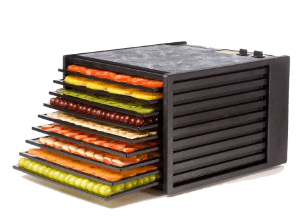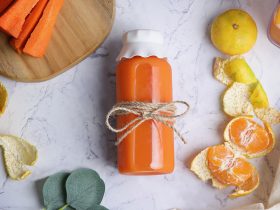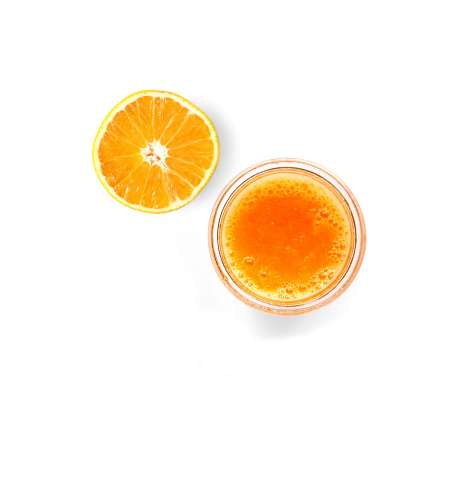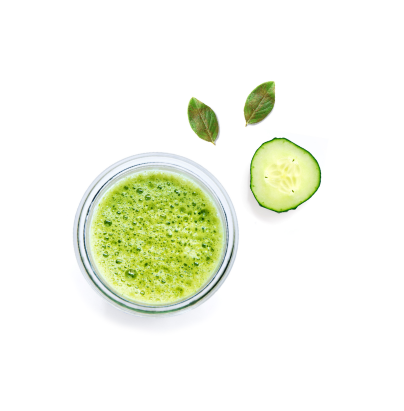Juicer Vs Blender
Which is Healthiest?
We often get customers contacting us because they are confused by whether they have read about the advantages of blending versus juicing. People who have read some of the things said by Vitamix about their blenders get confused by the concept of ‘Total Juice’ and here we want to dispel the myth that any blender is either similar to or better than any juicer. They are completely different machines with different functions and both have their own place in a healthy kitchen.

A lot of confusion has arisen about the different nutritional aspects of juicing vs blending. In the past some high end blender manufacturers have attacked juicing as wasteful and less healthy than using a blender and they’ve tried to make the choice for consumers into an either/or option. Similarly, the multimillion commercial venture known as the Nutribullet blender has built its reputation by going after the juicer market, claiming that it is a ‘nutrient extractor’.
The argument that a blended drink is better than extracted juice largely rests on the claim that you waste a lot of goodness when you are juicing by discarding pulp, whereas you include everything in the drink when blending. This is only half true because with an efficient juicer you are mainly wasting the fibre element of the ingredients. Humans can’t digest insoluble fibre anyway, although it does provide a useful function as an intestinal broom in the healthy digestive system. If you already get enough fibre in your diet generally, what is the big advantage to adding more in the form of blended vegetable drinks? The whole point of removing the fibre when juicing is so that you can consume the liquid nutritional contents of much more fruit and vegetables and get a super-dose of phytonutrients. To understand this point more fully we need to look at what is potentially misleading in the claims made by Vitamix.
Vitamix ‘Total Juice’
 “Juice extractors throw away a majority of the disease preventing phytochemicals contained in fruit and vegetables” – Vitamix make this false claim with a little table with numbers on it. A good quality juice extractor does exactly the opposite to what Vitamix say here. They are selling blenders by trying to introduce a fear of the risk of disease if you use a juicer. These claims are made in bold headings in literature that they’ve produced and they are completely unsupportable.
“Juice extractors throw away a majority of the disease preventing phytochemicals contained in fruit and vegetables” – Vitamix make this false claim with a little table with numbers on it. A good quality juice extractor does exactly the opposite to what Vitamix say here. They are selling blenders by trying to introduce a fear of the risk of disease if you use a juicer. These claims are made in bold headings in literature that they’ve produced and they are completely unsupportable.
“The pulp that juicers throw away has more vitamins and minerals than extracted juice” – Again this is completely misleading and to support this claim they would need to produce an extremely inefficient juicer for the test. If I juice a bunch of grapes there is a tiny proportion of waste, consisting mostly of grape skins. Am I to believe that although the squeezed pulp makes up less than ten percent of the original fruit, it still contains more than half the total vitamins and minerals available when compared to the 90% plus that I drink? With fibrous vegetables there is more waste, because there is more fibre. The waste from a good juice extractor consists mainly of this indigestible plant fibre and the majority of the nutritional content available is already extracted in the juice, so juicing is not as wasteful as claims by some blender manufacturers disingenuously suggest.
The most misleading aspect of this negative marketing is that it conveniently fails to address the main nutritional advantages that juicers can offer. Vitamix also used to refer to their blenders as ‘total juicers’ to imply that it gives you juice, but with more complete results nutritionally than an actual juicer. A blender doesn’t produce ‘total juice’. There is already a name for the ‘total juice’ concept – it’s called a smoothie.
Blendtec Too?
 The other main American raw food blender manufacturer is at it too, but this time instead of calling it ‘total juice’, Blendtec call it ‘whole juice’. Same hype; different manufacturer. But we’re probably being naive if we expect all marketers to tell it like it is. It’s a great shame, because both Vitamix and Blendtec produce extremely efficient and powerful blenders that are a great asset in any healthy kitchen. Instead of concentrating on the positive features of their blenders, they have attacked juicing as wasteful and less nutritious, without offering evidence. They’ve taken a very positive aspect of juicing – the fact that you discard the fibre in order to drink the juice from a larger amount of fruit and veg – and tried to turn it into a negative.
The other main American raw food blender manufacturer is at it too, but this time instead of calling it ‘total juice’, Blendtec call it ‘whole juice’. Same hype; different manufacturer. But we’re probably being naive if we expect all marketers to tell it like it is. It’s a great shame, because both Vitamix and Blendtec produce extremely efficient and powerful blenders that are a great asset in any healthy kitchen. Instead of concentrating on the positive features of their blenders, they have attacked juicing as wasteful and less nutritious, without offering evidence. They’ve taken a very positive aspect of juicing – the fact that you discard the fibre in order to drink the juice from a larger amount of fruit and veg – and tried to turn it into a negative.
The Advantages Of Using A Juicer
Naturally, neither Vitamix nor Blendtec mention the main ways that good quality juicers offer access to better nutrition. Along with Nutribullet, they’d prefer to skip over the advantages of juicing. First let’s address the false idea that juicers are particularly wasteful. With a good juicer there is no reason why high quality juice drinks should be either expensive or wasteful. Some cheap juicers may be wasteful and there are some bad examples out there that can make juicing into a less economical activity. Good quality juicers will provide a high yield of juice.
One significant problem with blended drinks that we can mitigate with juicing relates to ingredients that have not been grown organically. Non-organic fruit and veg often contains residues of agrochemicals, like pesticides and herbicides. If you are blending rather than juicing, you are drinking most of these toxins. If you are juicing – you are throwing most of the toxins away.
Unlike animals, plants can’t excrete toxins, so they bind them away in the cell walls. What are the cell walls? Fibre. That stuff that you can’t digest anyway, but the same stuff that some blender brands claim to pulverise into a very fine form to make it easier to digest! If you can afford to blend only organic ingredients then no problem. But with a juicer, you are also removing most of the plant’s stored up agrochemicals, by removing most of the fibre.

We’d be lying if we said there was no waste with juicers and this varies depending on the method of juice extraction and the ingredients being juiced. But we’re disappointed when we read alarmist hype about ‘throwing away disease preventing phytochemicals’. Nutritional therapies have evolved around the fact that fruit and vegetable juices are teeming with nutrients. The main advantage of a juicer that blender manufacturers don’t mention is that juicing allows you to get good quality nutrition from a much greater quantity of fruits or vegetables than you could ever consume, either in blended form or by eating them. One can easily drink a pint or two of fruit and vegetable juice per day, as well as eating healthily. That juice will contain the majority of the nutritionally valuable components from up to a couple of kilos of fruit and vegetables. You take this huge nutritional boost in addition to the rest of your normal diet. Smoothie type blended drinks are also highly nutritious and offer something different to fresh juices, but if you were to attempt to drink up to two kilos of fruit and vegetables in smoothie form, you are going to get full pretty quickly, because of the amount of fibre it contains. Vegetable smoothies are great – but perhaps in smaller volumes.
Juice can also be more easily digested than a fibre-rich blended raw vegetable drink. This is another reason nutritional therapists recommend juicing to their clients; because it delivers larger quantities of nutrients as well as placing less of a burden on the digestive system. The aspect of being readily absorbed makes fresh juice nutrition just as advantageous to healthy people as it is to those who are fighting illness. With a juicer you can take a mega-dose of nutrients that are instantly digested and put to work. A blended vegetable smoothie fills you up, and takes longer to digest.
Blenders Are Great Too

With a good juicer the pulp from most vegetables is pretty well stripped of it’s main goodness and the stuff in the pulp bucket is mostly fibre. Even then, this is not necessarily waste as this pulp – preferably organic only – can be used to bulk up soups or as an ingredient for raw food dehydrator snacks. Failing that, pulp can make excellent compost for your garden and be recycled into more fresh ingredients.
The issue of waste is a little more blurred with some juicers when it comes to fruits. Some are particularly good at juicing even softer fruits, making these ingredients more economical to juice than in other types of juicer, but soft fruits do also lend themselves perfectly to being used whole in smoothies.
So Which is Best, Blender or Juicer?
To us this has never been a question that makes sense because we don’t see how it is useful to make a comparison between kitchen machines that have completely different purposes. Rather than choosing between these two kitchen machines, it’s possibly more appropriate to decide which one to buy first. Most of us already have a kitchen blender that’s capable of doing fruit smoothies and grinding small quantities of harder, dry ingredients. If you can put up with the limitations of your existing household blender, then adding a good quality masticating juicer will help you access additional nutrition from fruit and vegetable juices. In our opinion this would offer more than just owning an upgraded blender, but if you can afford a good juicer and a good blender, we’d recommend both.
(To find out about the differences between various juicing methods and choosing the right juicer for you click here.)
 Register / Login
Register / Login 













